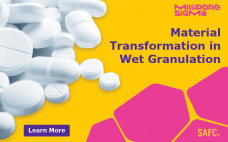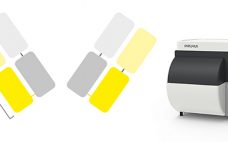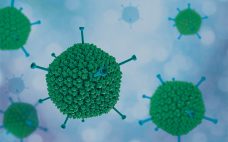cGMP grade transfection reagents should be produced and formulated following strict guidelines. Some suppliers manufacture transfection reagents according to medical devices cGMP standards which makes the reagents suitable for viral vector manufacturing in the United States but not suitable for direct administration into humans. Those are often labelled as âfor research use only and further manufacturing. Not for use in humans or animalsâ. Others comply to pharmaceuticals cGMP guidelines, making the transfection reagent suitable for viral vector manufacturing as well…
Manufacturing
Lab Scale Depth Filtration with FILTROSPIN™ 20
FILTROSPIN™ 20 by FILTROX enables you to quickly and efficiently test different depth filters or quickly purify a small amount of liquid. The filters are inserted into standard 50 mL centrifuge tubes (Labcon® SuperClear® 50 mL tubes). The liquid is then filtered using a centrifuge or vacuum. In order to evaluate the most suitable and optimized production process, small-scale trials are the key factor to start with. With the help of laboratory scale trials, errors and other issues can be…
Application of Dry Granulation to Facilitate Raw Material Handling
Pharmaceutical and biopharmaceutical manufacturing relies on the timely and seamless orchestration of many steps to meet aggressive timelines and ensure operational efficiency. A fundamental element of the processing workflow that can impact schedules is the use of multi-ton quantities of bulk raw materials such as buffers, salts and stabilizing chemicals. These raw materials are typically prepared in a just-in-time manner to meet dynamic production needs and enable rapid changeovers.
Ligand Binding Assays: Return on Investment Analysis using Octet®
Octet® systems enable analytical assessment of biologics in various stages of the development workflow beginning with discovery and early selection to validation, manufacturing and quality control. The instrumentâs configuration and sample plate format coupled with real-time analysis allows for rapid assay method development. In the last couple of years, Octet® systems have been used by multiple organizations to generate supporting data submitted to various regulatory bodies for the approval of different biologics drug candidates. In addition, Bio-Layer Interferometry (BLI) technology,…
Automation Solutions for the Efficient Integration of Single-Use Equipment
Single-use process technologies have been increasingly incorporated into the manufacturing of biopharmaceutical products over the past two decades. While the reasons for implementing SU systems for biomanufacturing are compelling, there are still some challenges and concerns related to their use. Process automation is often considered one of the weak points of single-use technology. Automation islands are frequent phenomena with SU systems, and integrating the equipment with larger automation systems is challenging. A number of suppliers – like Cytiva, Merck-Millipore, Sartorius,…
7 Key Questions for Understanding the Benefits of Scale-out Biomanufacturing
Changes in production scale required due to increasing product needs throughout clinical trials introduces risk to the product development timeline. Both the process and the product can be dramatically impacted from scaling-up to larger production volumes due to changes in the bioreactor microenvironment. By âscaling-out,â instead of âscaling-upâ these risks can be mitigated. The âscale-outâ biomanufacturing paradigm, which involves simply adding one or more of the same-sized bioreactor to the manufacturing run to obtain the production volume required, can also…
Material Transformation in Wet Granulation â The Effect of Continuous Process Dynamics, Material and Formulation Properties
Continuous manufacturing (CM) is increasingly used as an alternative to traditional batch manufacturing of solid pharmaceutical dosage forms. Wet granulation is one of the manufacturing technologies that was successfully migrated from batch to continuous processing. Thereby, the residence time of material under (stress) conditions is significantly reduced which in many cases is a main advantage of CM. However, in other cases with slow transformation processes this raises new challenges. In particular, the question arises as to which process parameters and…
Validated Quantitation and Activity Assay of Antibody Fragment Molecule (Fab) for Process Development and Quality Control
The analytical group at Boehringer Ingelheim, Fremont, USA needed a robust assay to measure the biological activity of an antibody fragment (Fab) molecule for in-process testing as well as stability and lot release testing in their Quality Control (QC) department. The developed Fab activity assay is accurate and robust, with intermediate and intramediate precision less than 10%. Drug activity measurement using the Octet® system has become a critical parameter for their product evaluation and has resulted in increased Fab drug…
Enhancement of Tablet Coating Using an Innovative Functional Excipient
During formulation of solid dosage forms, film coating is used to improve the appearance and stability of tablets, make them easier to swallow, mask the taste, modify or sustain release, protect the drug from the harsh gastric environment, protect from moisture and/or oxidation and, as a result, to improve the stability and overall therapeutic effect of the final drug product. Depending on the individual needs, a polymer with appropriate properties is chosen during formulation development to serve as film-coating matrix.…
CAP®Ad â A Versatile Platform for RCA-free, Industrial Scale Adenoviral Vector Production
Adenoviral vectors are frequently used as gene delivery tools for various medical applications. In most cases, replication-incompetent adenoviruses are employed, which, once they have infected a target cell, cannot spread further in the patientâs body. In such applications, regulatory guidelines require that the formation of replication-competent adenoviruses (RCA) in the production process must be minimized. Since the risk of RCA occurrence depends on the adenoviral vector and the cell line used for generating the virus stock and for manufacturing the…










